We are seeing an era of large value creation in stocks, either due to new opportunities (mega trends) or sector disruptions. If we rewind, the largest company in US by market cap was at a $100bn market cap in 2001. It moved to $300-400bn in 2008. A decade and a half later it is much more than $1 trillion.
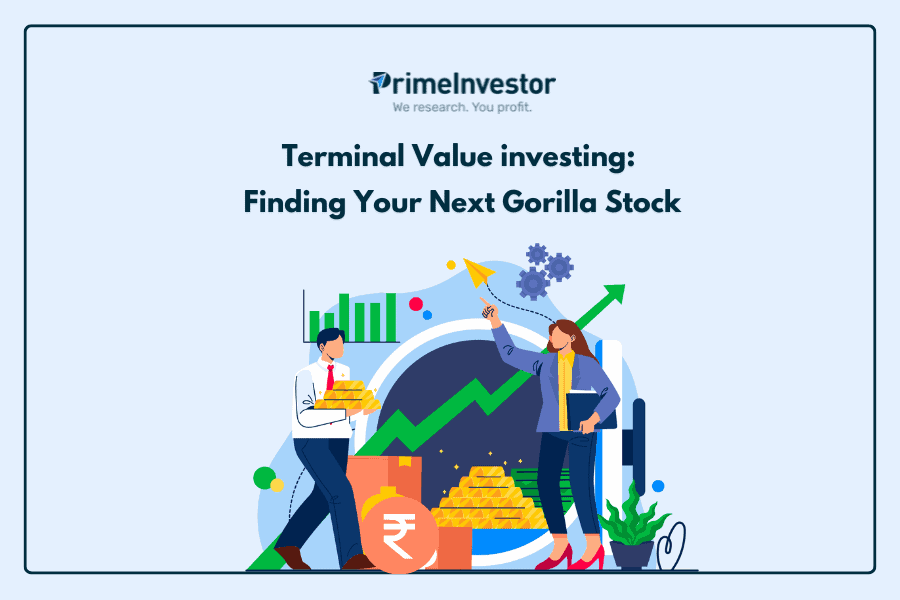
Just as India celebrated surpassing Japan to become the 4th largest economy, a single US corporation surpassed our GDP in market value.
Over three decades ago, the Nikkei Bubble of 1989 saw Japan becoming a $4 trillion economy and its stock market making up 45% of the world market cap. Companies from Sony to Toyota to Panasonic to Honda to Nissan to Hitachi surprised the world. The Indian market too is seeing value creation today, either due to new opportunities or disruptive trends. But given their rich valuations, betting on stocks with large value creation potential can be a swim-or-sink choice.
Rakesh Jhunjhunwala, the role model for Indian investors looking to net multi-baggers, favoured an investment philosophy, looking far into the future, to identify stocks with multi-bagger potential. Trust MF, led by Utpal Sheth – RJ’s right-hand man – came up with a framework based on his learnings over decades and called it Terminal Value Investing or Gorilla Investing. This article deep dives into how this philosophy works. Please note that this is not a recommendation to invest in Trust MF schemes.
What is terminal value?
The value of a company is the present value of all its future cash flows. This is the basic principle which underlies the Discounted Cash Flow Method of valuation or the famous DCF.
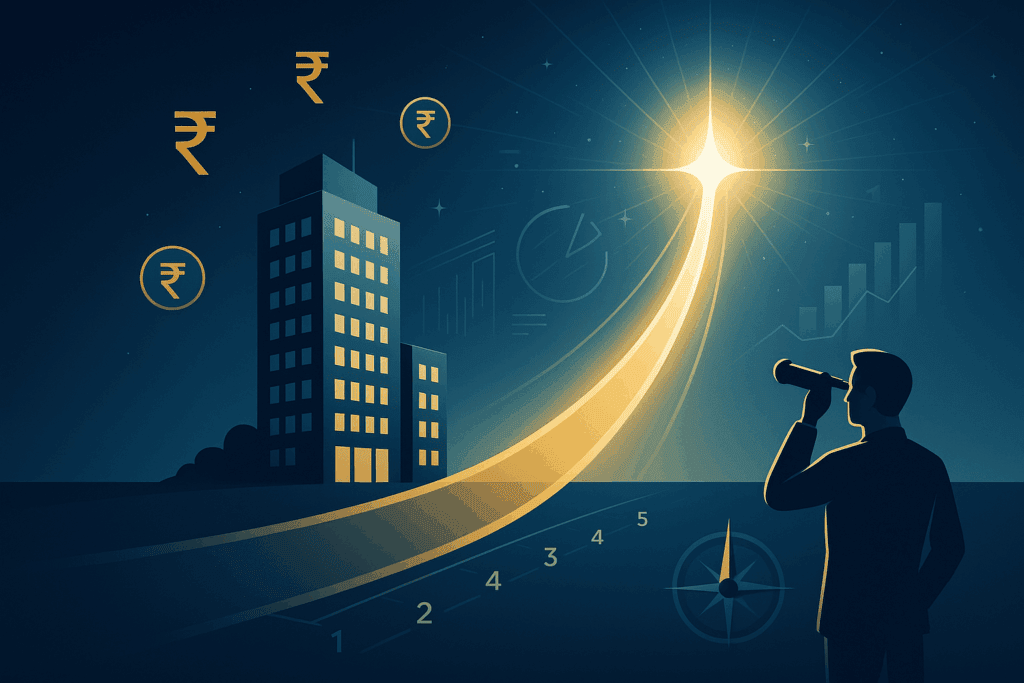
In DCF, there are two components.
- The present value of all cash flows for the forecast period.
- Terminal value or residual value of a business beyond this period.
But here’s the catch.
There’s always a limit to which the future cash flows of a business can be forecasted – say 10 years or 15 years into the future. This is because variables such as growth, cost of capital, capex, working capital etc which are unpredictable beyond a point. But the life of a good company is far beyond that, often stretching into decades. During the life of a company, there can be acquisitions or capital allocation decisions that can change its trajectory.
Imagine that you did a DCF model of Mahindra & Mahindra or Larsen & Toubro or Marico 10 or 15 years ago. You may have forecast cash flows for 10 years and then assumed that they would grow at 4-5% for their remaining life (residual life). This is their “terminal value”.
But can you see how off-the-mark the 4-5% growth assumption was? These companies are still very robust and growing, perhaps at higher rates than in the past. Marico was a single product business (Parachute) 15 years ago and today it has multiple brands, while building out a D2C portfolio from scratch. M&M has delivered an unusual success story in the Indian auto industry. For Larsen & Toubro, over a third of its valuation now comes from its IT subsidiaries with a far better cash flow profile than its legacy business.
So, one would have gone terribly wrong in using the standard DCF assumptions for such companies, if we had arrived at a terminal value based on 4-5% long-term growth assumptions. This is why getting a more accurate grip on Terminal Value is critical.
The Terminal Value Paradox: Why Future Dreams Drive Today’s Prices
Let’s try to understand how terminal value plays a big role in valuation with the help of few popular real-life examples.
#1 The Terminal Value Divide: When Zomato = Wipro
Consider this: buying Zomato today costs Rs 2.5 lakh crore, while Dixon requires Rs 1 lakh crore. Yet neither company’s Year 1 cash flows would cover even a fraction of your interest costs on such investments.
So why do investors pay these prices? Terminal value—the expectation that these businesses will dominate their markets for the next 20-25 years. Roughly 80% of Zomato’s and Dixon’s current valuations stem from cash flows expected after Year 10. Strip away these terminal value assumptions, and their stock prices would collapse to just 20% of today’s levels.
The contrast is stark. Hero MotoCorp and Wipro trade based purely on present realities: existing cash reserves plus predictable 10-year cash flows. Hero MotoCorp, with Rs 14,000 crore in cash and Rs 5,000 crore in annual cash flows, trades roughly at its 10-year DCF value. Wipro follows similar math.
This explains why conservative investors bristle at Zomato commanding the same market cap as Wipro. The market has decided: Zomato represents the future, while Wipro represents maturity—or potential disruption. Wipro’s PE of 20-21x reflects its 5-6% free cash flow yield, not growth expectations.
Ironically, Wipro itself enjoyed “Zomato-like” valuations in 2001, when 90% of its value was terminal value.
#2 When Growth Stories Stumble: The D-Mart Reality Check
Avenue Supermart (D-Mart) offers a sobering lesson in terminal value volatility. Until 2021’s tech IPO boom, D-Mart was the terminal value darling among Indian retailers.
The bull case was compelling: D-Mart was India’s Walmart-in-waiting, with 20-25 year growth forecasts assuming 30%+ annual expansion. This narrative pushed D-Mart to a median PE of 121x over seven years, with peaks at 150x.
Then quick commerce arrived. Suddenly, the market questioned whether D-Mart was the disruptor or the disrupted. The terminal value assumption that justified those astronomical multiples became suspect overnight.
#3 Today’s Terminal Value Economy: Everyone’s Playing the Same Game
Post-2021, terminal value investing has gone mainstream. New-age platforms (Swiggy, Zomato, Nykaa), electronics manufacturers (Dixon), retailers (Trent), and specialty manufacturers (Solar Industries) all trade at 100-150x PE multiples.
The common thread: Present value from their next 10 years of cash flows—even assuming 25% growth—accounts for less than 20% of their market valuations. Terminal value props up everything else.
Even seasoned investors struggle with this math. Motilal Oswal Private Equity sold their entire Dixon stake at IPO for under Rs 2,000 crore market cap, viewing it as a low-margin business with limited scale. Recently, they bought back just 2.77% for Rs 2,221 crore, effectively valuing Dixon at Rs 80,000+ crore.
The question: Were they wrong at IPO, or are they wrong now buying Dixon at 125x PE? Terminal value bets remain gambles—even for the professionals.
The Utpal Seth framework to approaching terminal value
So can there be a formal framework for terminal value investing? Rakesh Jhunjhunwala was a master practitioner of it. Trust Mutual Fund, founded by Utpal Seth a close aide of RJ, is a recent entrant to the MF space and has said that it will follow the philosophy of “Terminal Value investing”. This may be the best place for investors to really understand how it works in practise.
If you are keen to deep dive into this framework, you can learn directly from Mr. Utpal Seth by listening to his 10 episode masterclass on terminal value investing However, if you don’t have the time or patience, we have tried to summarise it below.
In its Terminal Value investing framework, Trust MF looks at companies through the prism of three key factors.
- Megatrends
- Leadership
- Intangibles
Each of these have significance and a combination of them is what creates Gorilla Companies.
If AI is a megatrend and a company with leadership in it owns proprietary technology (intangible) in this area, that is a Gorilla Company. We know that Nvidia ticks all the boxes. Hyperscalers such as Amazon, Alphabet, Microsoft would also pop-up here. A third line could be application developers, but as there may be many shareholder-value creation gets diluted leading to more monkeys than Gorillas in Mr Sheth’s view.
Illustration: Imagine that you bought a stock growing at 25% CAGR at a Price Earnings to Growth (PEG) ratio of 1 or 25 PE.
But a 25% growth stock deserves to trade at 50 times (PEG of 2) or more.
A 25% CAGR means one will double money in the stock every 3 Years, or 15 times in 12 Years if bought at 25PE. Even someone buying at a PEG of 2 (50PE) will make 15 times (25% CAGR) if PE still stays elevated for long. But buying at a PEG of 3 doesn’t result in meaningful returns.
Take another mega trend, Electric Vehicles or EVs. There is the pioneering EV behemoth in the US, Tesla, which exhibited scale, which has become a trillion-dollar company and set the benchmark for others. But it has an equally good Chinese rival now. You may have many more EV makers, battery makers, component makers, etc. beyond them in this mega trend, but the value creation gets diluted down the order.
Let’s now discuss how Trust MF identifies companies with high terminal value.
#1 Mega-trends
The first and foremost thing is identifying Mega-trends, but it is also necessary to do it early. This is because stock markets unearth and discount trends very quickly. By the time a trend is half-way through, valuations may already be sky-high.
So what creates Mega-Trends? Technology changes, demand-supply imbalances, economic cycles and government policies give birth to Mega Trends.
A synonymous term used by billionaire investor, Ramdeo Agarwal of Motilal Oswal, is “Value Migration”, where growth and valuations completely shift from sector to another.
Identifying mega trends early helps us gain from both earnings growth and PE re-rating, leading to multi bagger returns.
Here are some specific mega trends with their causes.
- AI & EV: The obvious first order impact of the AI mega trend is on the $4 trillion M Cap NVIDIA, followed by hyperscalers (Amazon, Alphabet, Microsoft) and at the other end are application developers.
When this is happening and Nasdaq is soaring to new highs, Indian IT services stocks are lagging fearing disruption. Their multiples today factor in cash flow yield and not growth. Likewise, the EV mega trend has led to creation of Tesla with a market-cap never seen in the auto sector. With Chinese EV giant BYD and cell phone maker turned car maker Xiaomi becoming >$100 billion companies, the only legacy auto maker with large market cap today is Toyota. - The digital consumption boom: A combination of mobile penetration, cheap data, technology and zero cost digital payment solutions have led to the rapid rise of technology-based platform businesses in India resulting in the Quick Commerce boom.
Not only have these companies bowled out physical retailer’s growth story, they have also threatened the FMCG majors’ distribution moat. Q Comm stocks today enjoy far higher market cap than most FMCG names barring HUL and ITC. Zomato has also moved past D Mart in market value. - Defence and China +1: After three decades of peace, the world has seen heightened wars and conflicts in the last few years due to trade, currency and critical commodities triggering geopolitical conflicts. This is why the ignored defence sector has now come into the limelight globally.
In a tight supply environment, India may need to make its own fighter jets. We could have a Gorilla in the making here if India’s only fighter jet maker can innovate at pace, come up with robust products and execute. History doesn’t suggest it, but the situation demands it and that’s when most surprises happen.
Contract Research, Development and Manufacturing (CDMO) and Electronics Manufacturing Services (EMS) are emerging as two major China+1 opportunities where market is according significant terminal value at this point of time. As we write this, a pure play CDMO player has concluded a 3,400 Cr offer for sale, at a valuation of Rs.32,000 crore for a company with revenues of Rs.1,800 crore.
#2 Leadership
Gorilla companies cannot be also-rans. They need to be leaders in a sector buoyed by a mega-trend.
In the AI mega trend, Nvidia is followed by hyperscalers and application developers, but Nvidia has been the disproportionate value-creator.
In the EV mega trend, there is a Tesla with technology moat in software, but there is also a BYD with technology moat in battery manufacturing and even more. But electric vehicle manufacturers are many in number and just being an electric vehicle manufacturer may not lead to value creation. As Utpal Seth outs it, in any mega trend, there will be Gorillas and there will also be monkeys.
The leader may not be the first company to be listed in a space or the one with the largest market cap at a point of time. A leader should be capable of riding the mega trend through-out, maintaining leadership with a big lead.
#3 Intangibles
As explained in the introduction, the peak market value of a stock in US has moved from $100bn in 2001 in the dot-com era to $4 trillion in today’s AI era. But intangibles were the key driver and not physical assets like plant or machinery or mines or oil fields.
A stand-out example of intangible assets is Pharma Patents. During the patent period, the pharma innovator makes a bounty and post patent, drug prices collapse 80-90% and still generic players make money. Other examples of intangibles include license, technology, brands, distribution, etc that have made several companies the Gorillas that we see today.
We have just heard Glenmark Pharma inking a deal with US pharma major AbbVie for licensing one of its molecules for an initial consideration of $700 million, final consideration of $1.22 billion and a double-digit royalty payment on commercialisation. Maybe one of the rare R&D outcomes in Indian pharma sector’s prosperous journey over the last 15-20 Years.
We have recently seen Bharat Forge and Solar Industries from non-glamorous businesses getting significant market attention for the kind of defence products they have come up with, an outcome of a decade of out-of-pocket R&D expenses. If there is one accounting number in which intangibles show up for investors, it is R&D expenditure as a % of the sales.
A caveat here. Gorilla companies need not always be new kids on the block.
Utpal Seth believes they can come from “adaptable incumbents” or “scalable challengers”.
If we look at financials, auto and consumer sectors, there are existing companies thriving in fintech or EV or digital disruption, which fit the description of “adaptable incumbents”.
Conclusion
What the terminal value investing philosophy unlocks is to look at companies from the lens of critical qualitative characteristics first and then get to numbers and valuations.
Starting with excel sheets is easy but getting carried away by them can lead to large, missed opportunities in the world of equities.
This is not a fool-proof investing philosophy though. Terminal Value investing, when you fail, can expose you to large downside. When your Gorilla bets fail, you can face the double-whammy collapsing growth expectations and price multiple compression.
The key is disciplined execution. Successful terminal value investing demands constant vigilance—regularly stress-testing your mega-trend assumptions, monitoring competitive dynamics, and staying alert to early warning signs of disruption.
At PrimeInvestor, we integrate these terminal value principles into our stock recommendations, but with crucial guardrails. We don’t blindly chase tomorrow’s dreams at any price. Instead, we calculate terminal value scenarios to ensure our recommended entry points offer sufficient upside potential while building in margin of safety. More importantly, we continuously revisit these assumptions as industries evolve, competitive landscapes shift, and companies pivot their strategies.
This disciplined approach to terminal value analysis helps us identify genuine wealth creators while avoiding the trap of paying infinite prices for finite dreams. You can explore our carefully vetted recommendations in Prime Stocks, where we balance tomorrow’s potential with today’s prudence.
The securities quoted are for illustration purposes only and are not recommendatory.
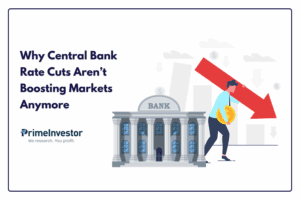
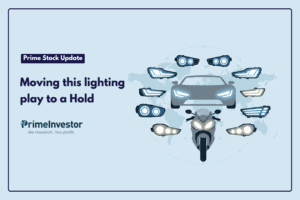
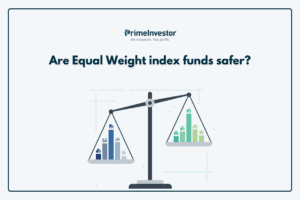

3 thoughts on “Terminal Value investing: Finding Your Next Gorilla Stock”
this is a interesting persepective, thank you for sharing . I have identified certain filters and ran across India and global markets. Revenue growth CAGR 3 years 25% or growing , PEG ratio 2 or less, ROE /ROCE last 3 years 15% or growing. Additionally added Rule of 40. Only handful of companies – Plantir , Eli Lilly , Waree and Laopu gold , Xiaomi, Shopify , BLS , MELI and Persistent qualify , In India companies like HAL etc doesn’t come up due to growth rate. Would be keen to hear your view if you where to translate this into a screening filters – what would your list looks like. I am happy to share the report and filters I had applied . Let me know
Welcome your query sir,
Also delighted to know about the output of your screeners. Thanks for pointing the rule of 40, it’s a new learning to me and it actually looks interesting.
HAL hasn’t come because of muted revenue growth, but PAT growth was far better than revenue growth. This can happen for Cos coming from a low growth business phase or a distressed economic environment (Eg, financials, cap goods, cement, steel, etc. Not just that any business coming out from low growth phase with margin expansion)
EBIDTA to Operating cash flow conversion is other filter that can be applied to ensure that high growth is accompanied by adequate cash flow conversion and not just by blocking money in working capital (inventory/receivables).
EBIDTA to OCF conversion rate of minimum of 65% can be applied
So, incorporating PAT growth also as a filter apart from revenue growth can also refine it further
In the end, if the asking PEG is more than 2, it makes sense to go for significant level of quality assurance (qualitative analysis) on each and every aspect – competitive positioning in business, management band-width, capital allocation decisions, etc
Because, at high asking valuations, there is no margin of safety, and NOT going wrong on qualitative aspects is the only margin of safety
That’s all to add for now. But feel free to come up with any further queries. Happy to dig into, refine and build queries that can facilitate better outcomes
Thank you
thankyou , glad you found rule of 40 useful. Originally I think it was applied for judging SAAS companies. Appreciate sharing – EBIDTA to OCF > 65% and PAT growth. Other metric I found useful is CFO/PAT ratio to identify quality of the earnings.